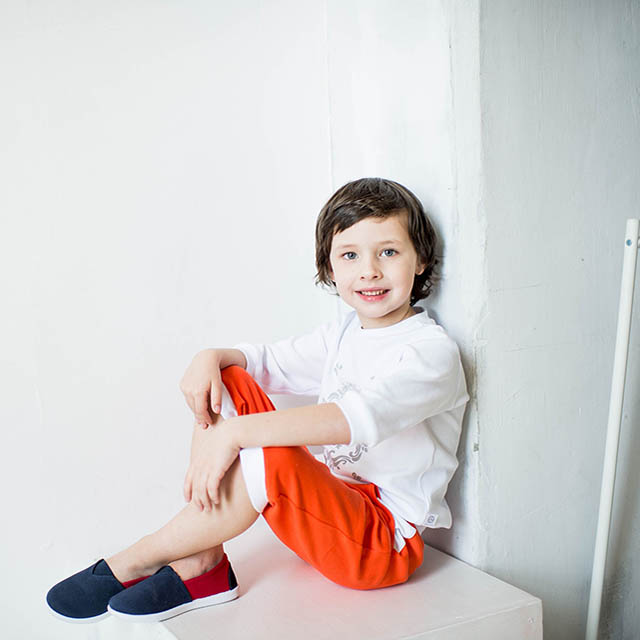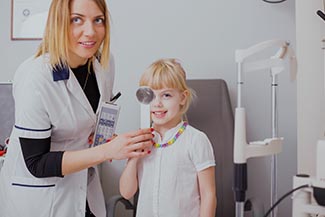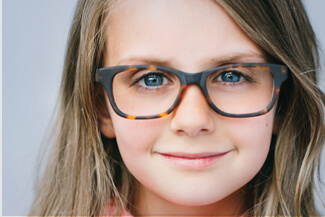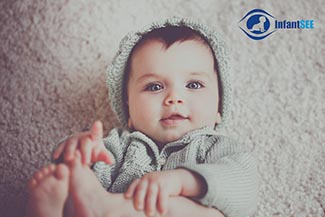Expert Eye Exams For Kids In Northeast Philadelphia
Routine kids’ eye exams are a great way to help your child succeed in school! Eye care specialists estimate that about 80% of classroom learning is taught visually. An undiagnosed vision condition therefore compromises your child’s ability to keep up and succeed in school, as well as impacts proper development and coordination.
Our highly qualified optometrist, Dr. Uri Schechter, will evaluate the full range of your kid’s visual capabilities. This includes assessing eye-hand coordination, eye mobility, near and far vision, peripheral eyesight and eye teaming. We want your child to have a pleasant, positive eye care experience, and Dr. Schechter is skilled at treating children with a gentle, friendly manner.
At the start of our pediatric eye exams, we’ll meet with you to hear about your kid’s medical case history, any ocular diseases in the family and current allergies or medications. We’ll encourage you to share any of your concerns about your child’s vision, and we’ll answer your questions patiently and comprehensively. We believe that a good partnership between patient and eye doctor is the foundation for quality kids’ eye care.
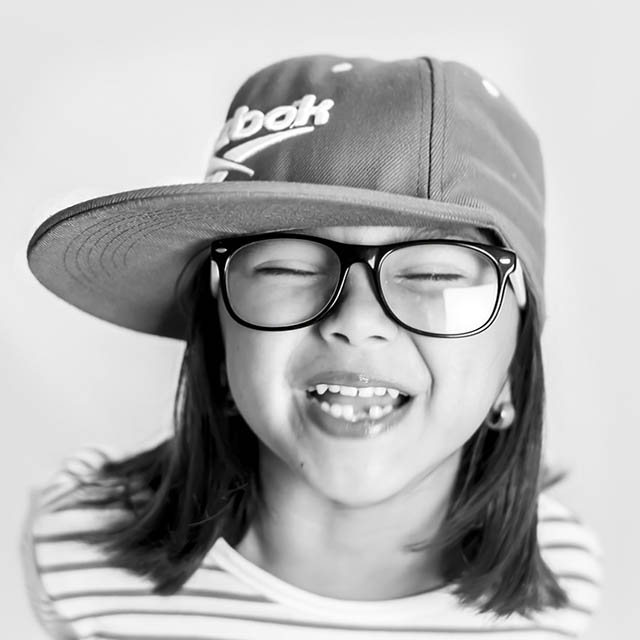
How is a pediatric eye exam different today because of myopia management?
When To Schedule Pediatric Eye Exams
The following guidelines were set by the American Optometric Association (AOA):
- First eye exam at a half-year old
- Second eye exam at 3 years of age
- Third eye exam before entering school, at 5-6 years old
If your child doesn’t need vision correction, it’s recommended to have routine follow-up eye exams performed about every two years.
However, if your child needs eyewear (eyeglasses or contact lenses) to see clearly, experts advise annual examinations.
Eye Development By Age
Birth – 24 Months
During the first few months of life, a newborn’s visual system is not yet fully developed. As time passes, a baby’s eyes gradually begin to focus, move around, and see the world around them.
Between 7-24 months of age, babies’ vision and physical movements advance quickly. Physical motions like crawling, standing up, and grasping onto things are part of their visual abilities and motor skills. By this stage, they are usually able to throw a ball and crawl after it or stand to reach a small object on a table. Should you notice any difficulties with these kinds of activities, contact us for a consultation.
2-5 Years
The preschool years are filled with new learning experiences and social interactions. Every day, your child will develop fine motor skills, which are essential skills they use to hold a pen, a fork, or a book correctly. Visual perception is equally important, as it gives them the tools to be able to read, write, play sports, draw pictures, and use a computer. Because 80% of learning is visual, should a child have any difficulty experiencing clear vision, his or her learning can be affected. The longer it goes untreated, the more difficult it can be for your child.
6-18 Years
Typically referred to as “the formative years,” kids in this age group change drastically from young children to preteens to teenagers. So much is evolving in their young lives academically, socially, and physically. With all these changes, it’s far too common to miss out on how their eyes are affected.
Vision problems like nearsightedness often begin during childhood, so it’s imperative that kids have annual eye exams. During the exam, the doctor will check for visual acuity, eye teaming (how the eyes work together), color vision, peripheral (side) vision, and more.
Glasses and Contacts for Kids
Children who need vision correction have a range of options. Glasses in the latest trends and designs provide clear vision while making your kids feel stylish and self-confident. Contacts may be a good solution for kids who are active in sports or concerned over their appearance. Contacts are generally recommended for kids between the ages of 11-14, but it’s always recommended to speak with Dr. Uri Schechter for any specific questions.
Learning and Vision
Sometimes, changes in a child’s behavior may be blamed on hormones, an incident at school, or even a learning disability, when they’re actually vision-related. If your child is having difficulties in school, it can be indicative of a vision problem.
Pay close attention to any of these signs:
- Avoiding reading
- Blurry vision
- Double vision
- Excessive blinking
- Eyestrain
- Losing their place often while reading
- Persistent headaches
- Poor reading comprehension
- Short attention span
- Tilting the head to one side
These physical symptoms can cause emotional reactions like frustration, irritability, or feelings of inferiority. That’s because they can affect things like reading, writing, homework, and being able to see the board clearly, and kids who struggle with this can act out their frustration.
If your child is showing any of these signs, contact Fox Chase Family Eye Care to schedule a consultation. We have the expertise, understanding, and top medical technology to diagnose and treat all kinds of vision difficulties in school-aged children.
Our Unique Approach to Children's Eye Care
Your children need more than just standard eye care. At Fox Chase Family Eye Care, we understand that need. Dr. Uri Schechter treats pediatric patients from babies all through young adulthood.
Our youngest patients deserve extra special care, understanding, patience, and a gentle approach along with top medical training and expertise. Contact us today and let our caring, experienced staff help care for your family’s vision needs for years to come.
Common Vision Conditions Diagnosed In Children
The most typical diagnoses in kids are refractive errors, such as nearsightedness, farsightedness and astigmatism. Strabismus, which refers to a misalignment of the eyes, is also a usual problem, and when left untreated it may progress into amblyopia (“lazy eye”).
Strabismus is often resolved using vision therapy and eye exercises, and surgery may be indicated for more severe cases. With amblyopia, the dominant eye may be patched in order to fortify the weaker eye.
Other usual vision conditions that Dr. Schechter may detect include convergence insufficiency, trouble with binocularity (eye-teaming problems), computer eyestrain and accommodation difficulty, which refers to an inability to switch between far and near vision smoothly. All of these disorders can interfere with necessary learning skills, such as reading and writing.
After your child’s comprehensive eye exam, we will share all of our findings with you and discuss the best vision treatment or therapy.
